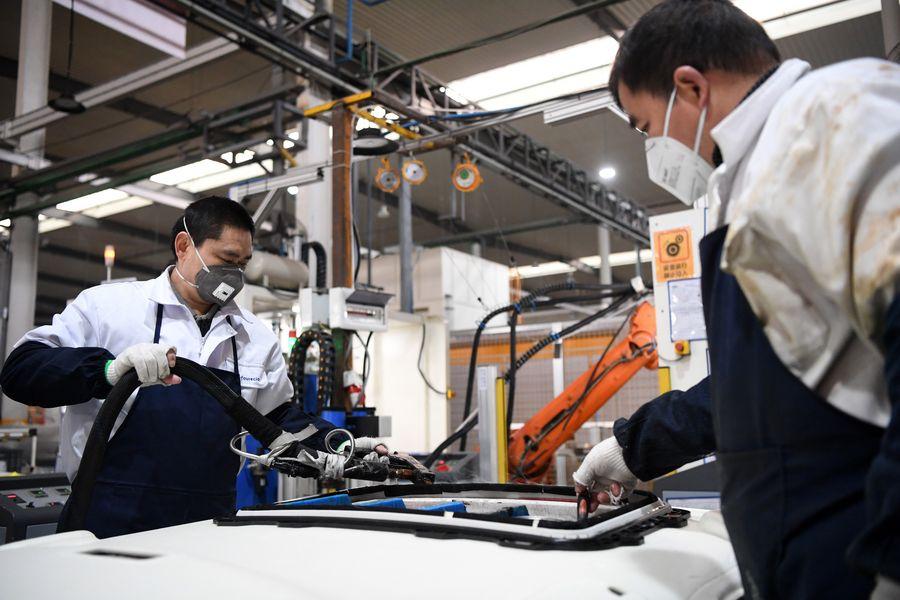BEIJING, March 10 (Xinhua) -- China's consumer inflation slightly moderated in February, but prices remained at a high level due to a supply shock brought by the novel coronavirus outbreak, official data showed Tuesday.
China's consumer price index (CPI), the main gauge of inflation, grew 5.2 percent year on year in February, according to data from the National Bureau of Statistics (NBS).
The reading, in line with market expectations, eased slightly from the 5.4-percent gain in January. On a monthly basis, consumer prices edged up 0.8 percent.
Food prices, which account for nearly one-third of the weight in China's CPI, went up 21.9 percent year on year last month, contributing 4.45 percentage points to the index rise as the epidemic disrupted market supplies and demands.
Restrictions on flows of transport and people, as well as business closures during the period, have affected food supplies while rising demands among stay-at-home residents to hoard food combined to push up prices, NBS official Zhao Maohong said.
Pork prices, which were largely expected to soften as the government took measures to boost supplies to mitigate the impacts of the African swine fever, continued to rise as a result of the epidemic.
Prices of the staple meat in China surged 135.2 percent year on year in February, driving a rise of 3.19 percentage points in CPI growth.
In the first two months, CPI went up 5.3 percent year on year on average, up 3.7 percentage points from the same period last year.
But with the production resumption and improved movement of goods and people, market supply and demand will gradually balance to moderate the inflation, according to Wen Bin, chief researcher with the China Minsheng Bank.
Tuesday's data also showed China's producer price index (PPI), which measures inflation at the factory gates, fell 0.4 percent year on year last month.
The NBS attributed the price decrease to seasonal factors and the epidemic that led to extended holidays, depressed factory activities and disrupted transportation across the country in the reporting period.
The sharp price decline in the international oil market last month has also prompted the PPI drop. Producer price plunge in oil-related industries including petroleum and natural gas exploitation and chemical goods manufacturing dragged the overall PPI down by 0.44 percentage points.
While the ongoing production resumption would spur demand and help push up prices, the recent rout in the international oil market will bring relatively big shocks, according to Wen.
In a research note, the Asian financial service group Nomura said PPI inflation could drop 1 percent in March on falling oil prices and oversupply of upstream raw materials, adding the inflation readings will have a limited impact on China's monetary policies.
Facing potential economic shocks from the epidemic, China's financial authorities pledged to pay more attention to policy flexibility to keep reasonably sufficient liquidity and release the potential of the loan prime rate reform.
The central bank has earlier stated that China will implement the "dynamic adjustment" of targeted reserve requirement ratio cut policies in the near future for better use of inclusive financing to shore up the virus-hit economy.




 A single purchase
A single purchase









